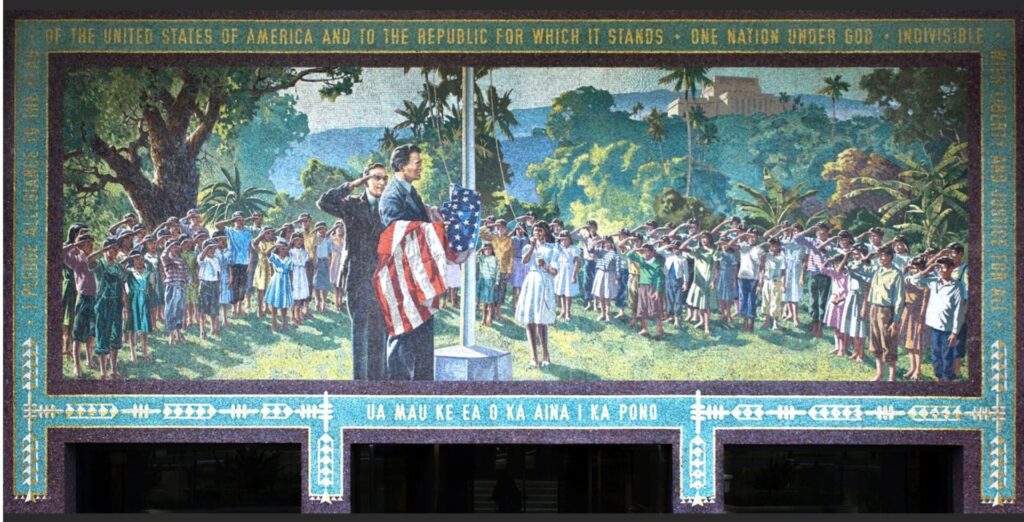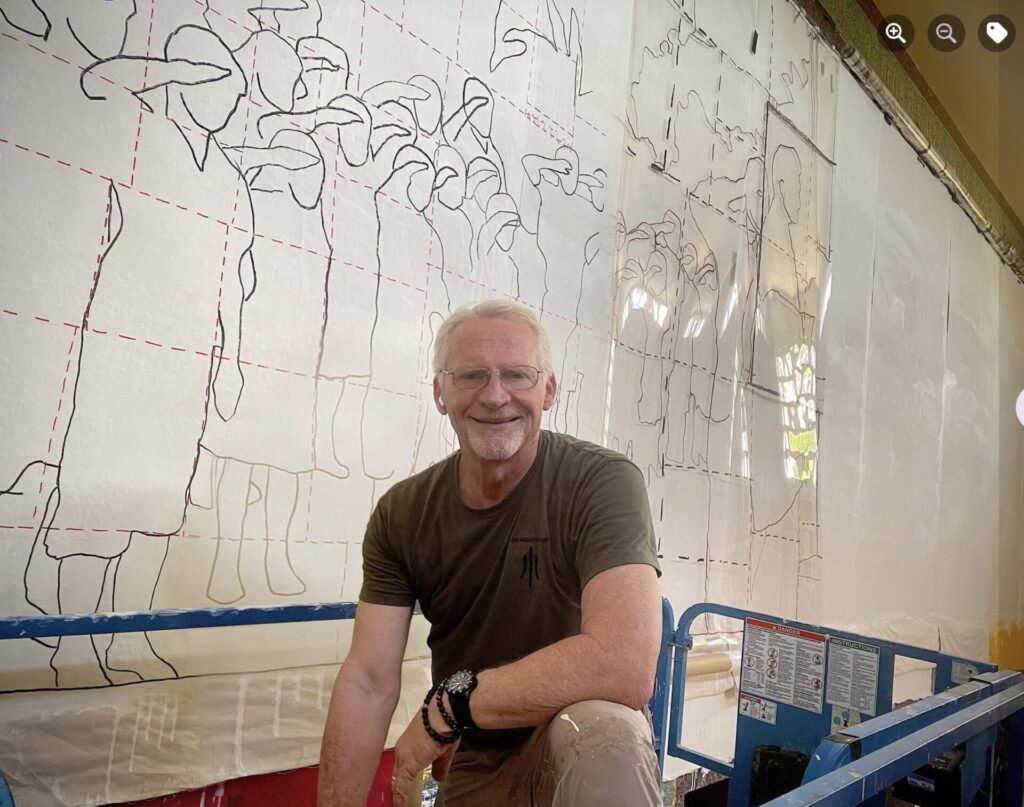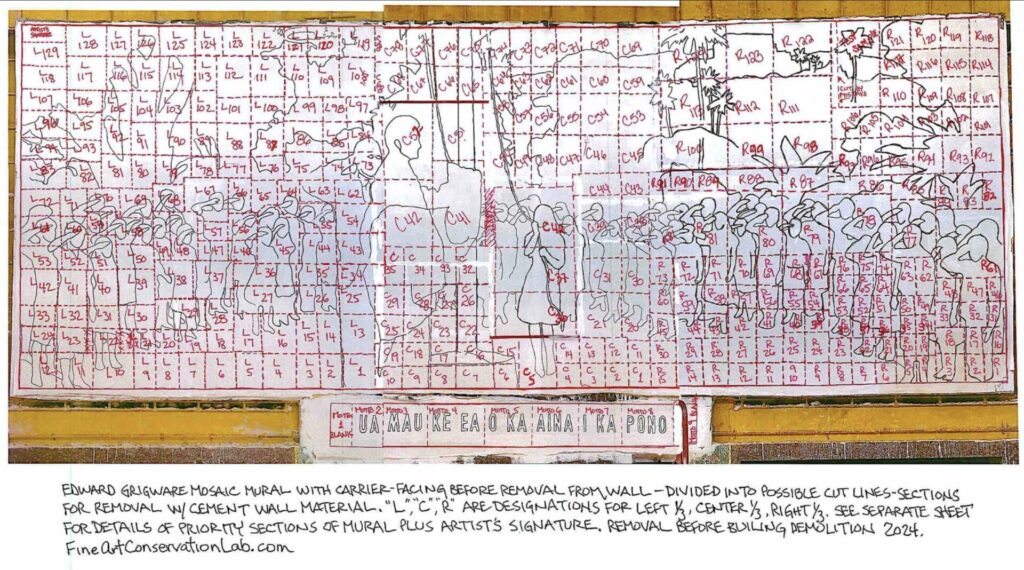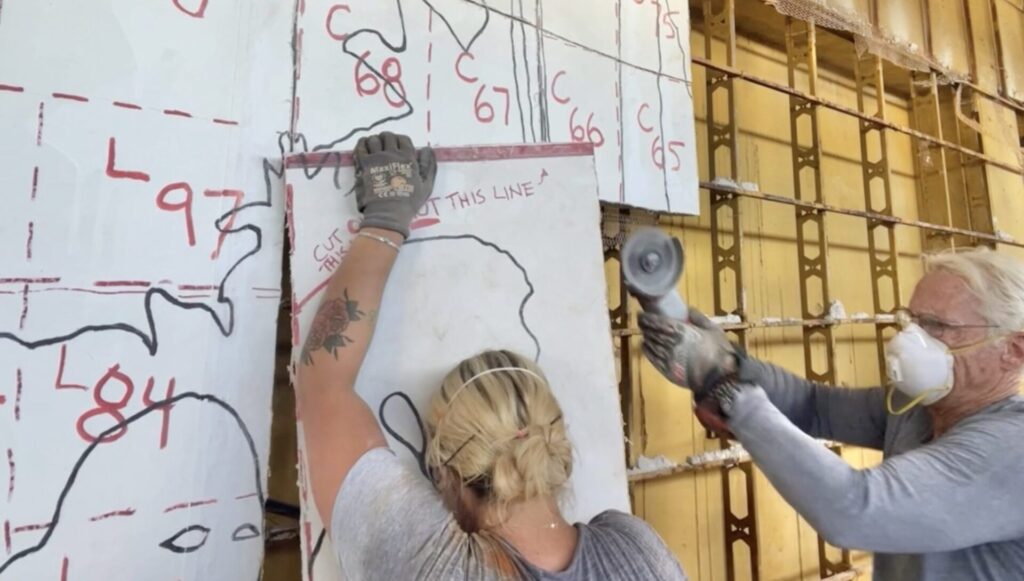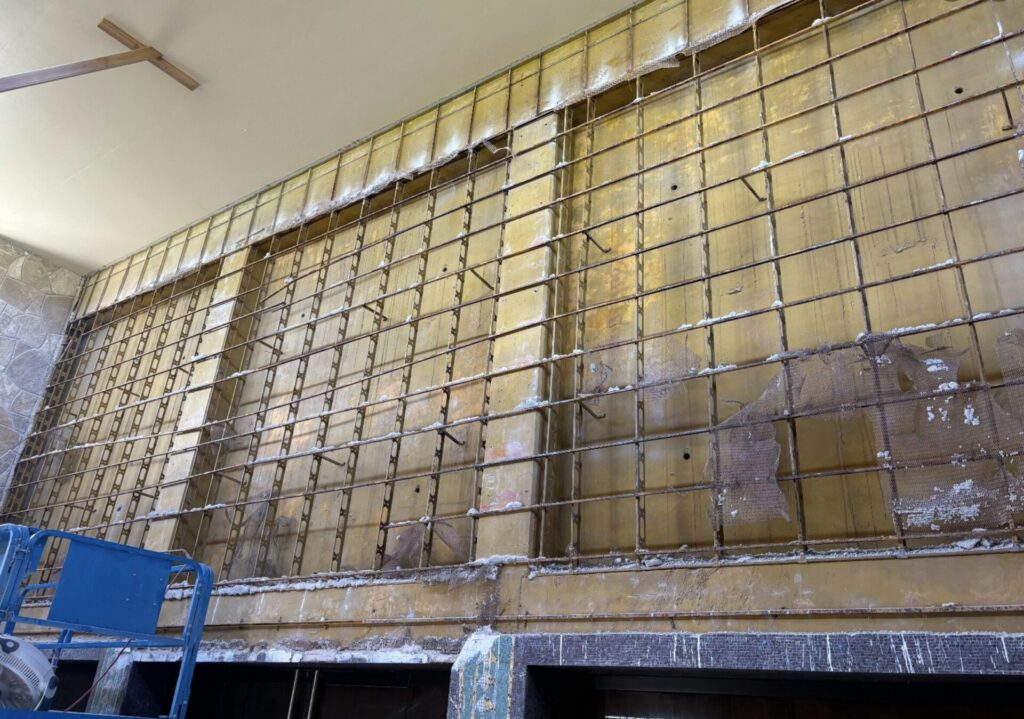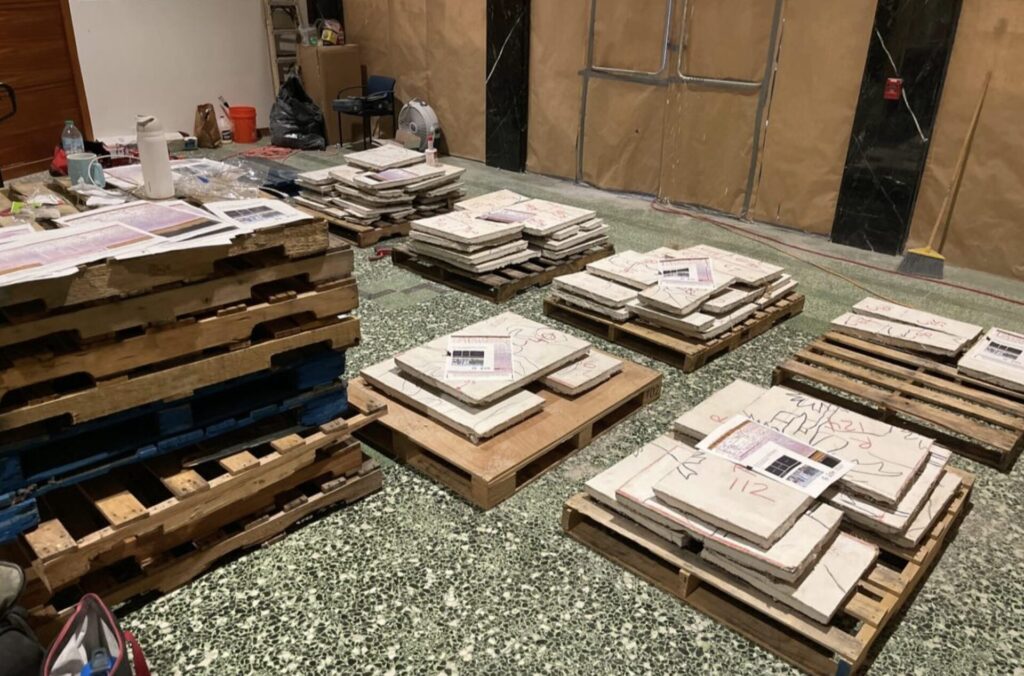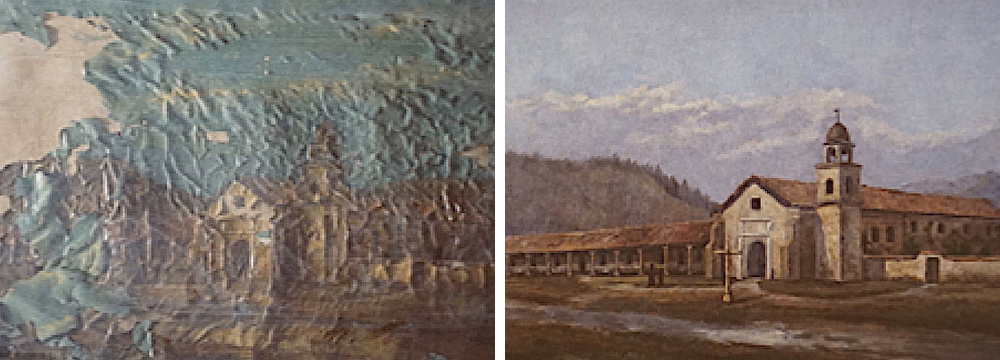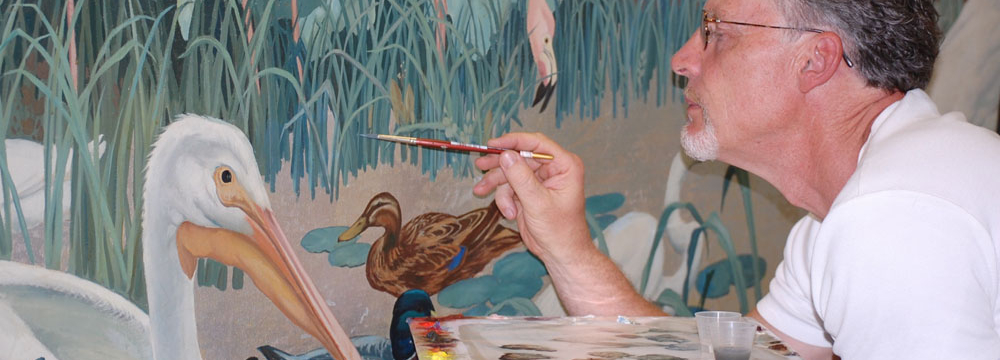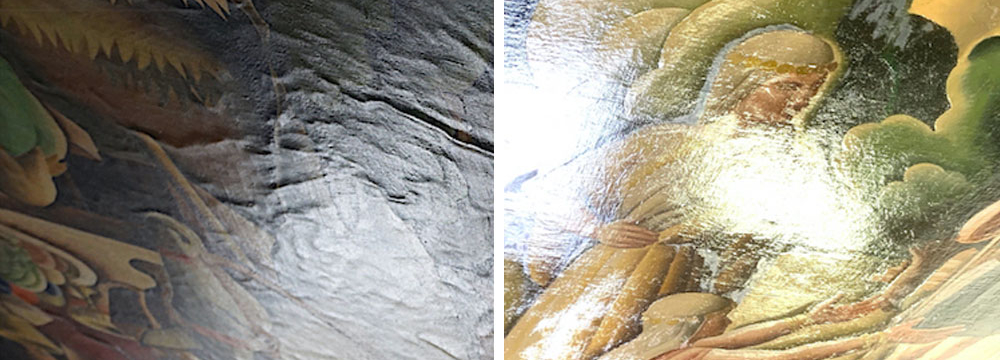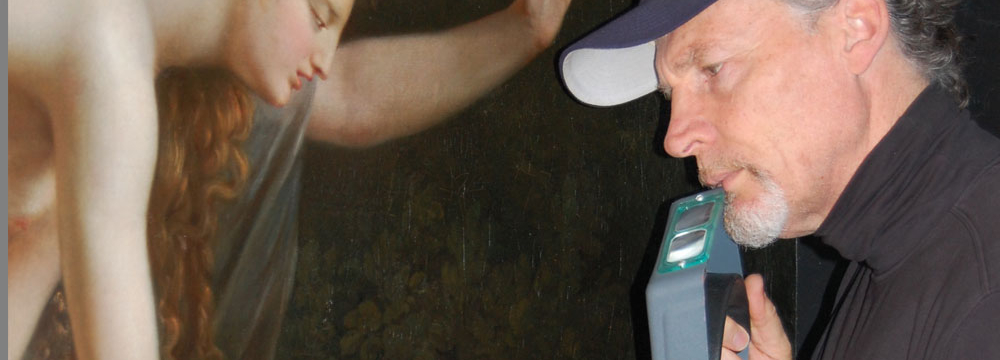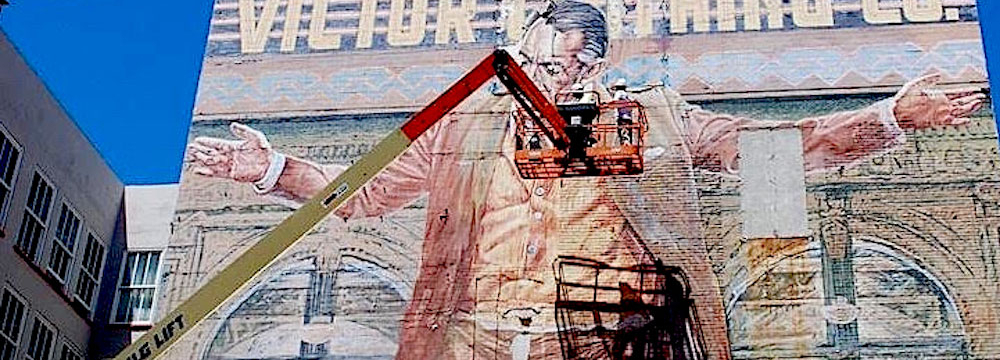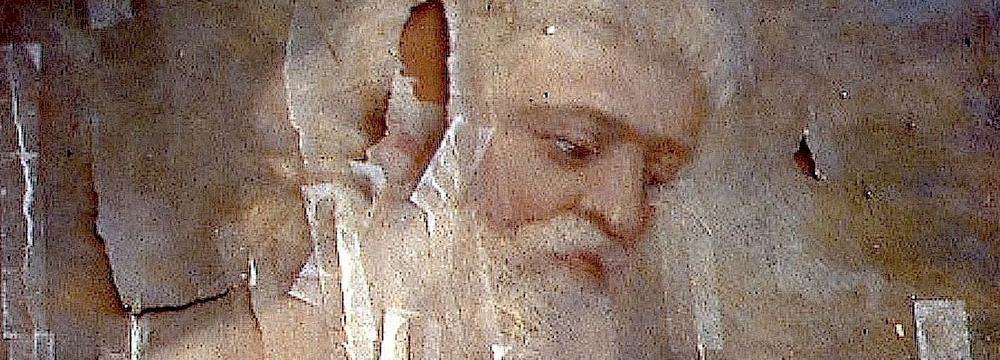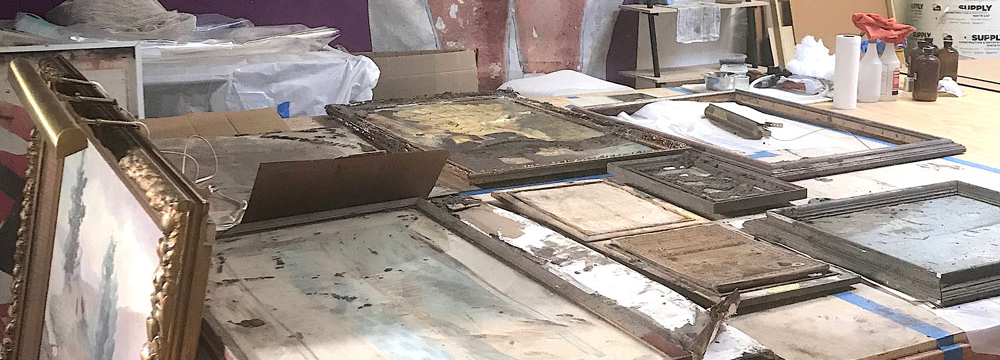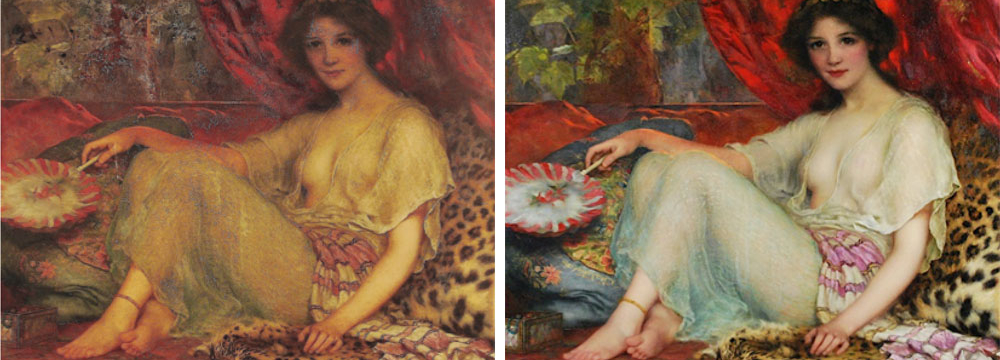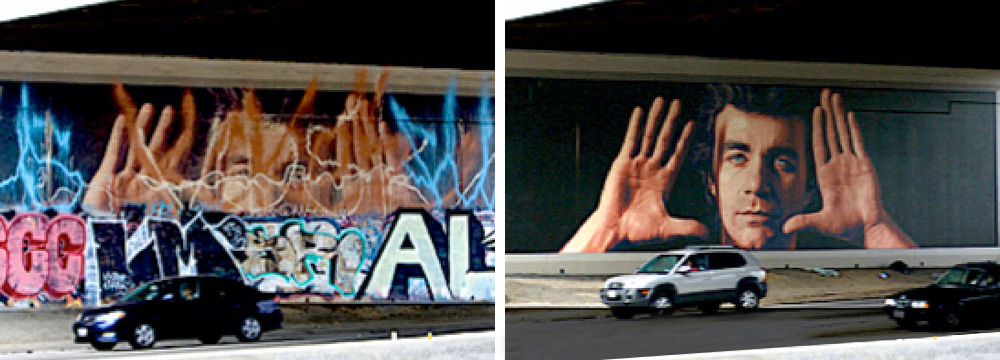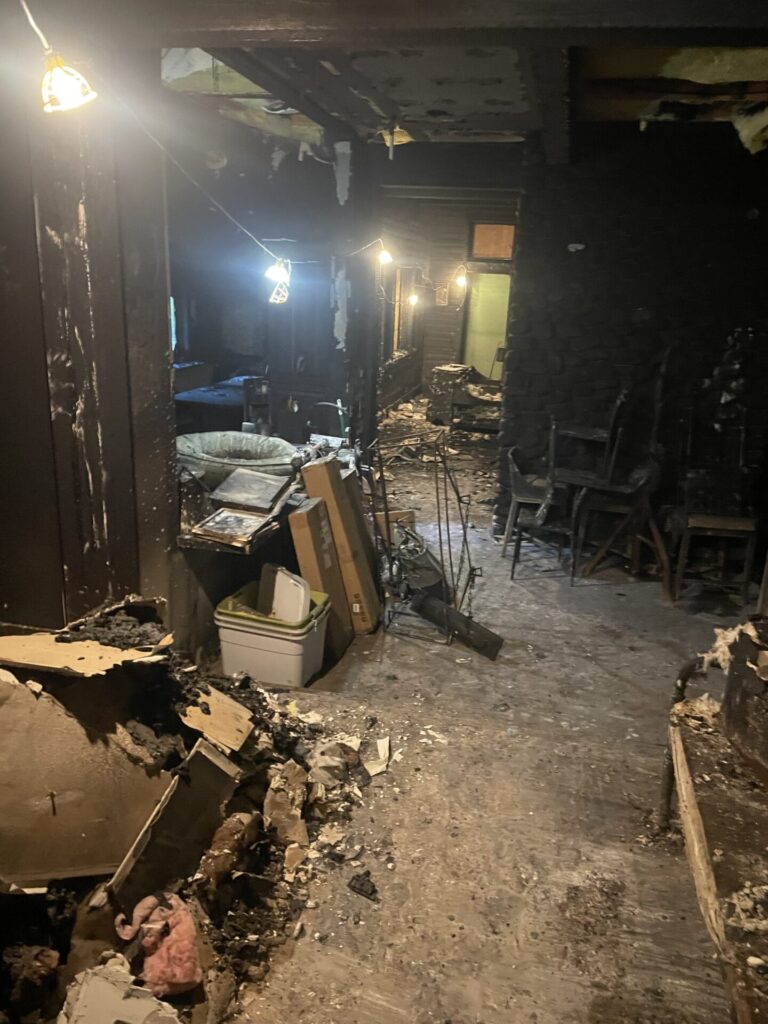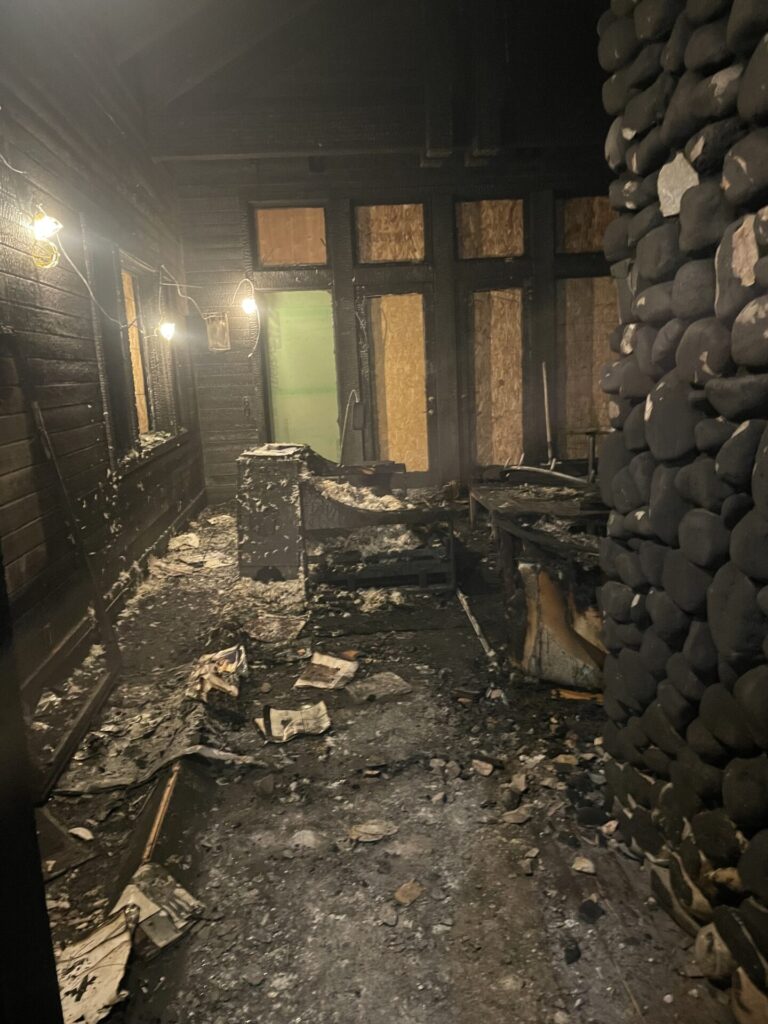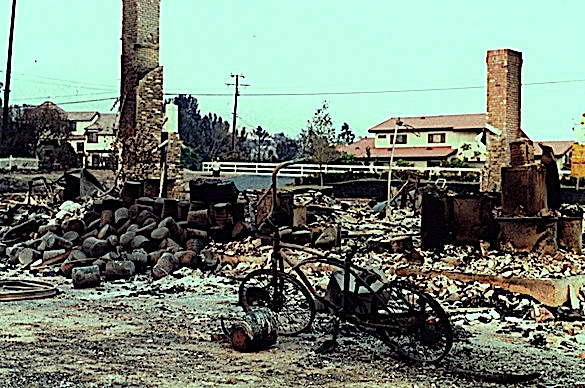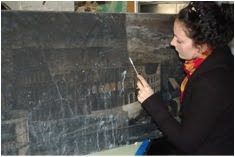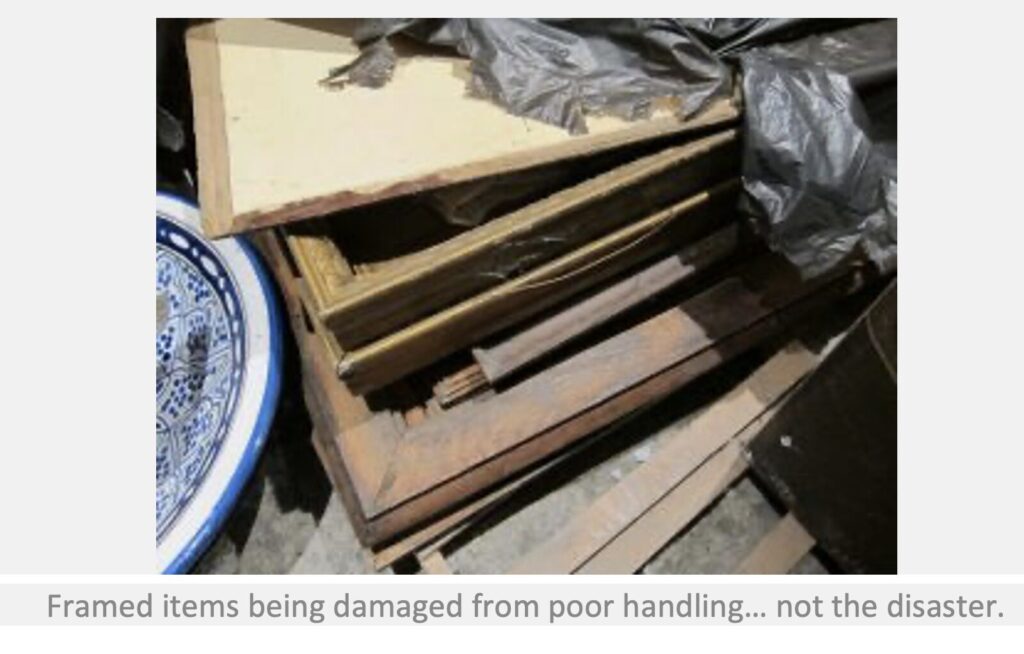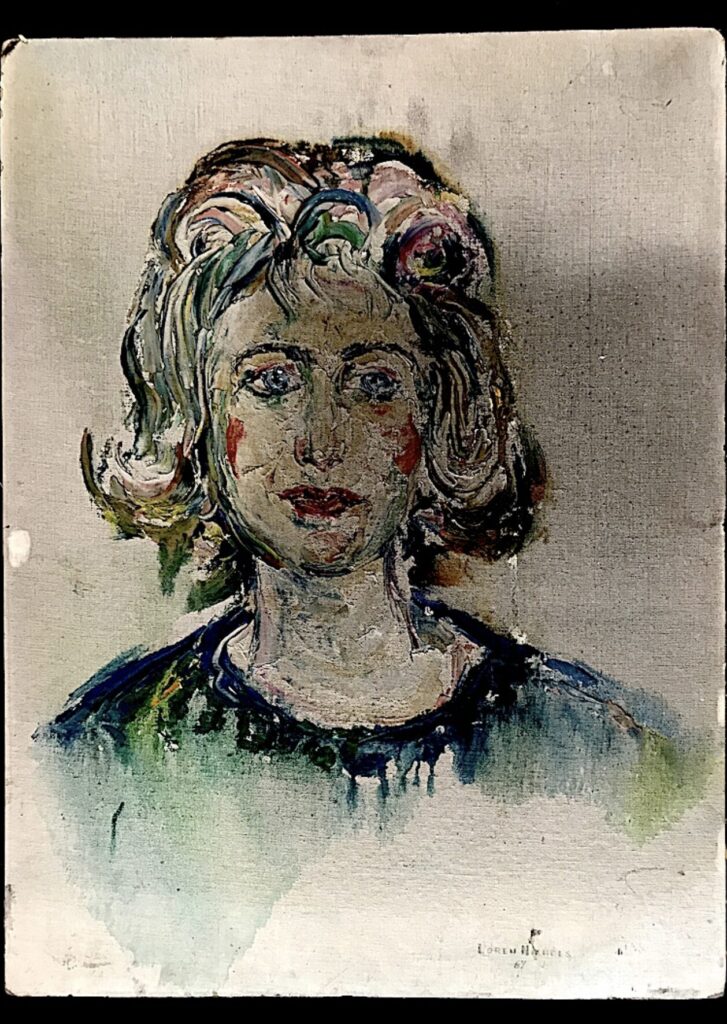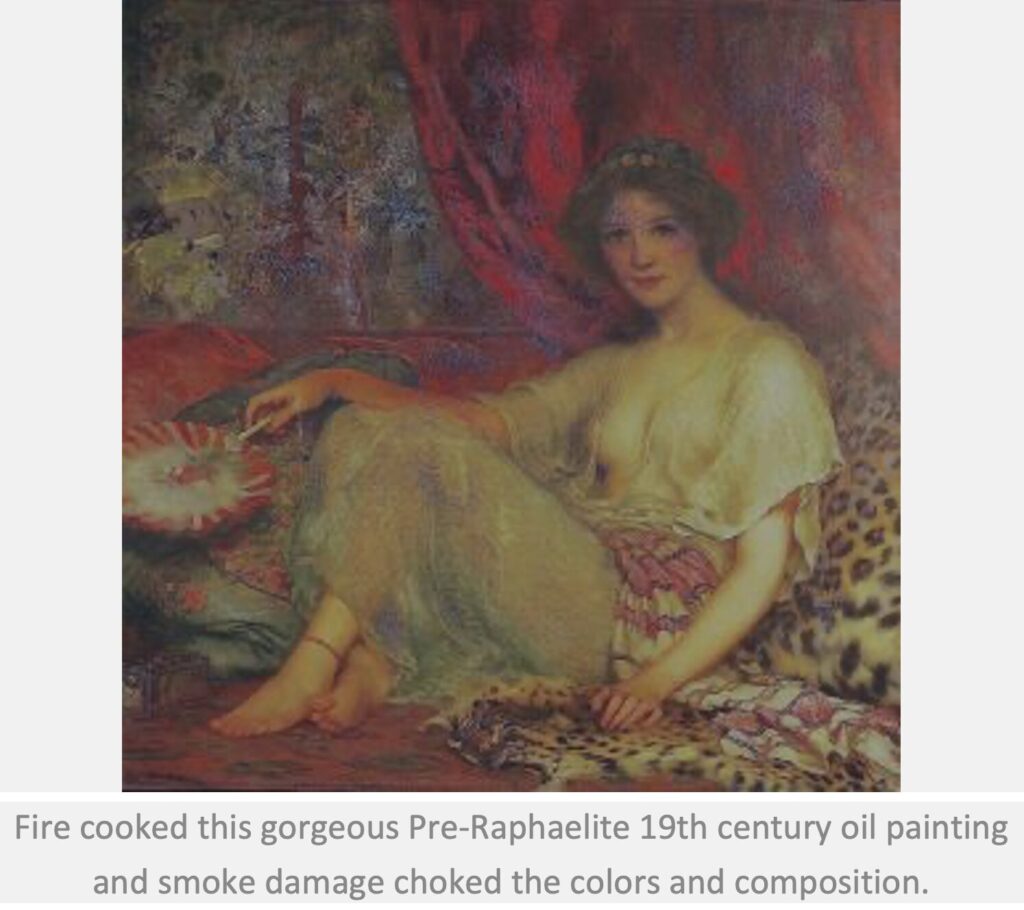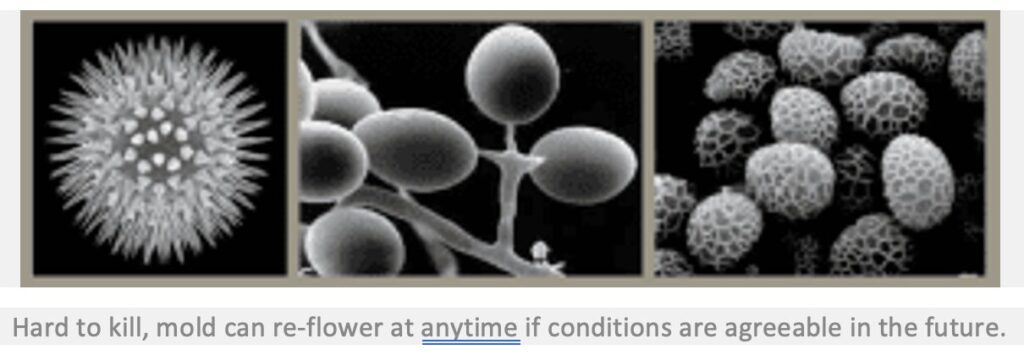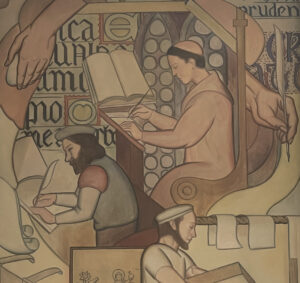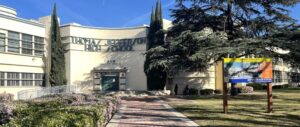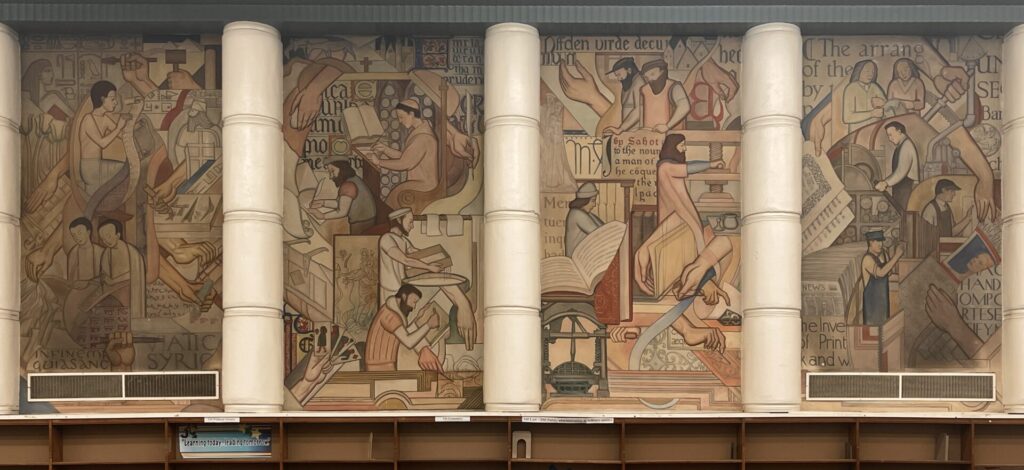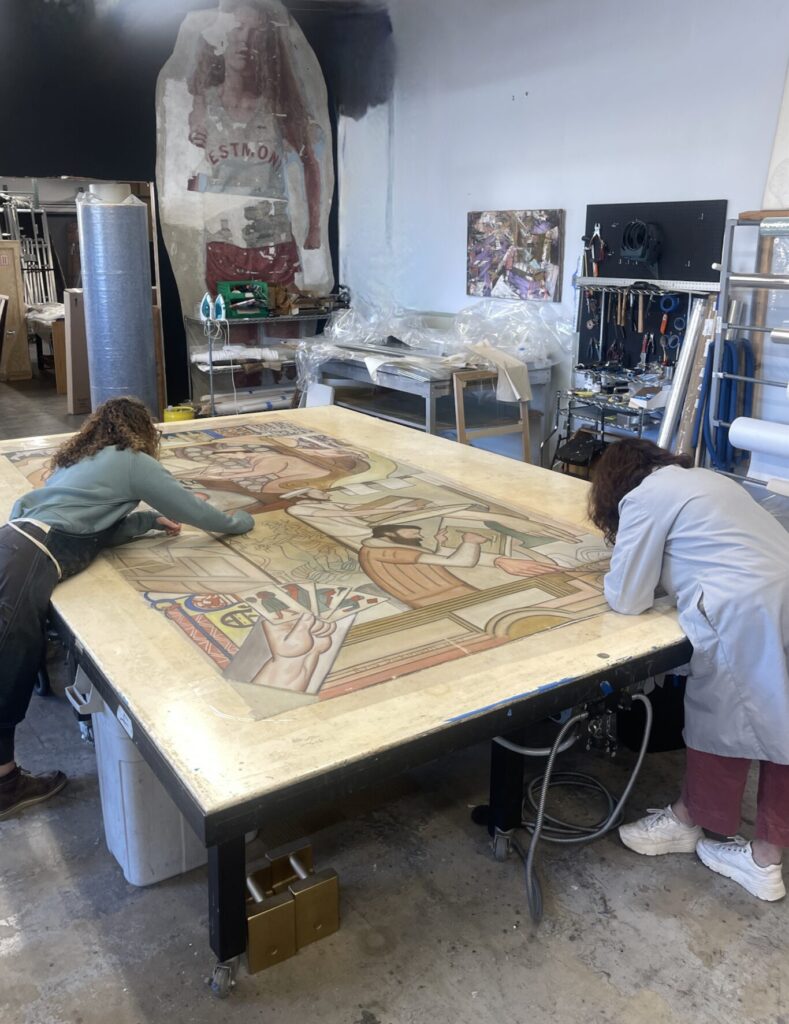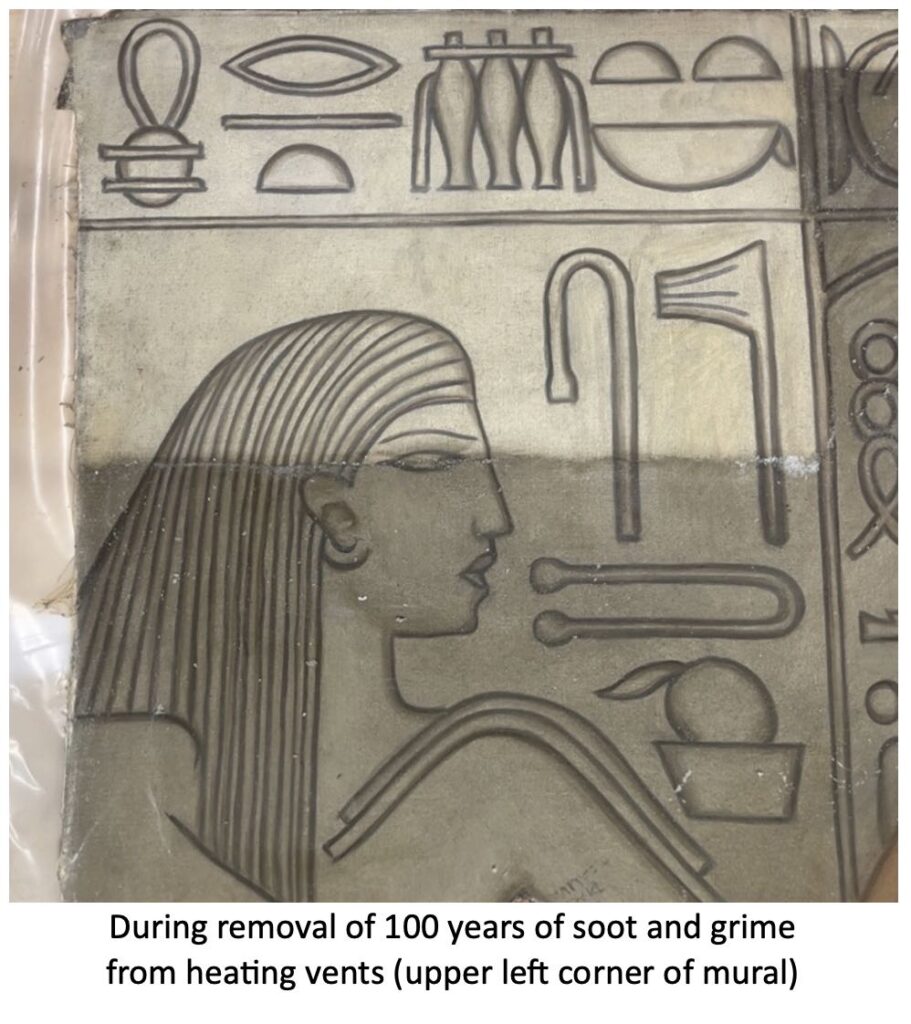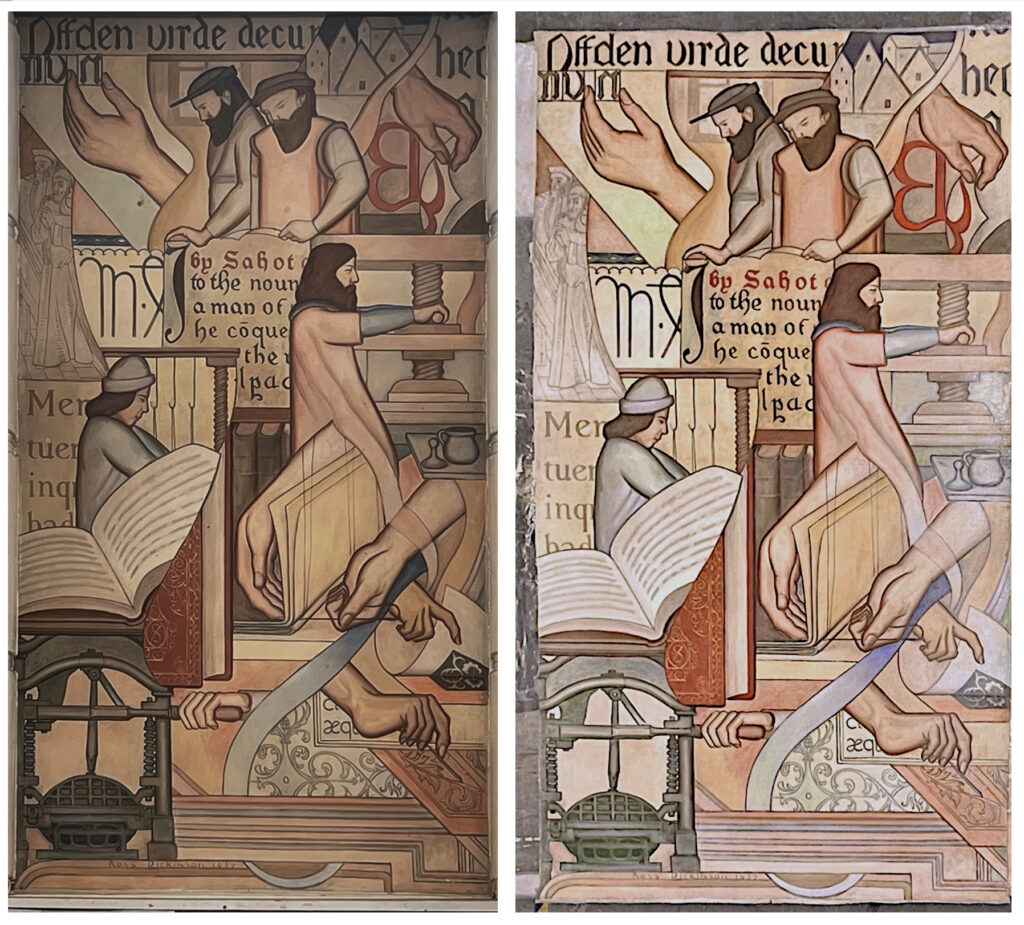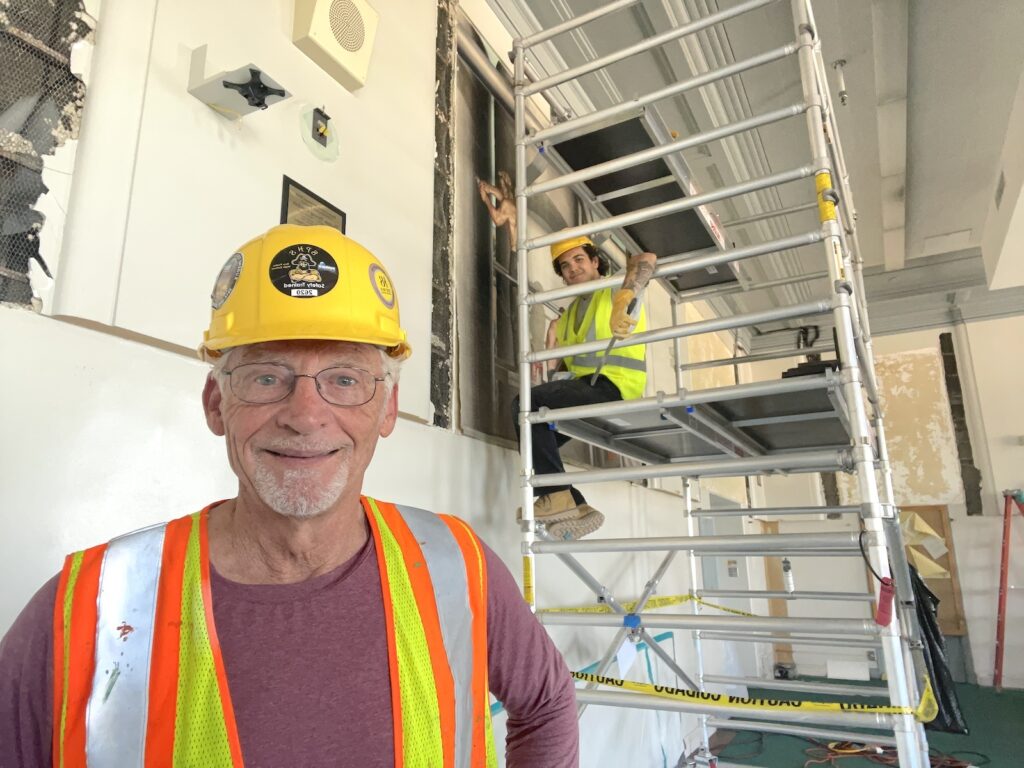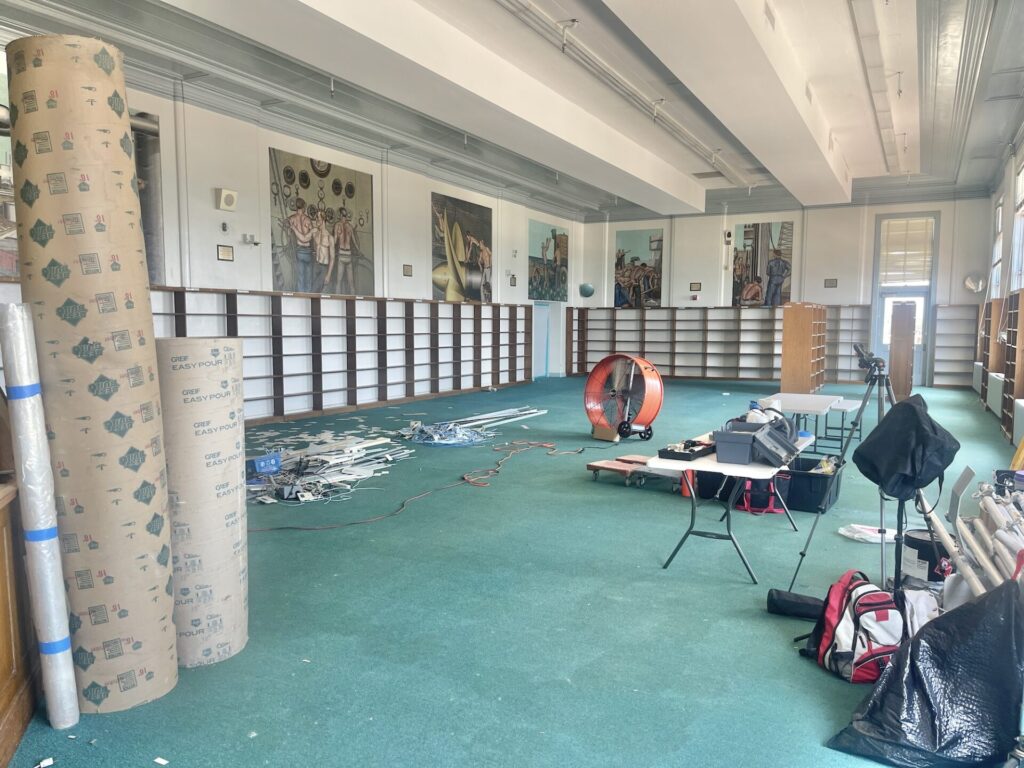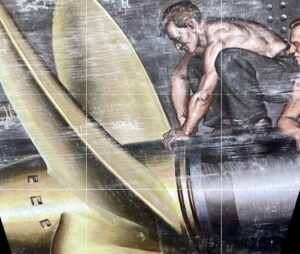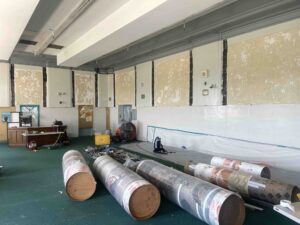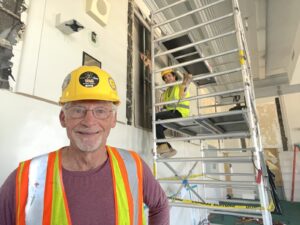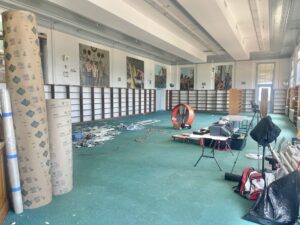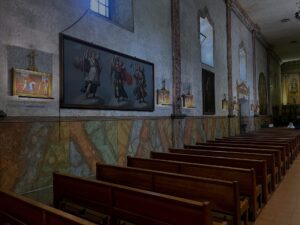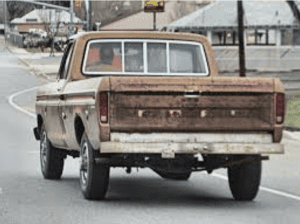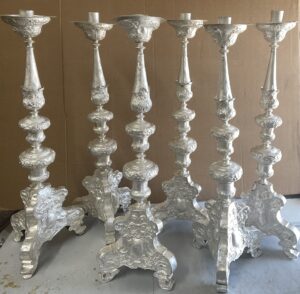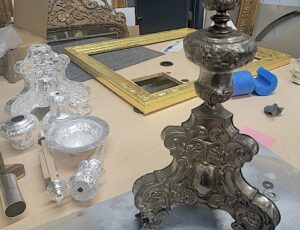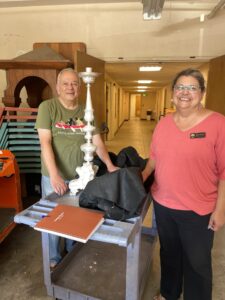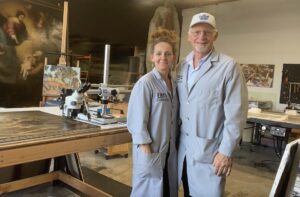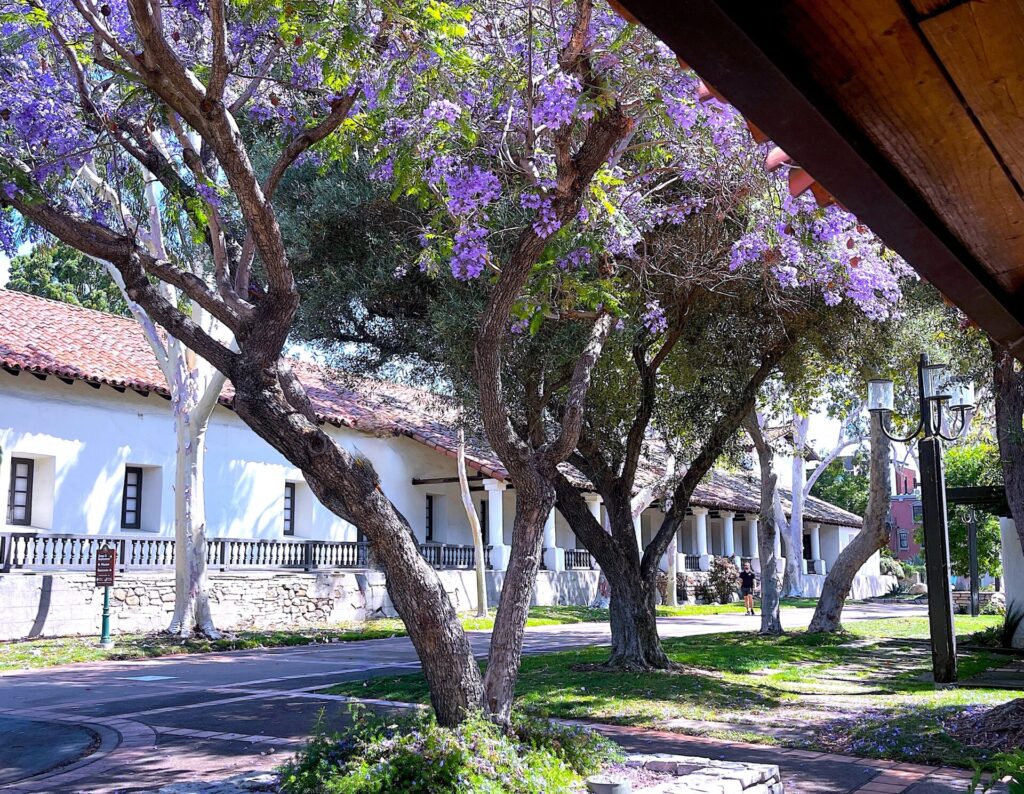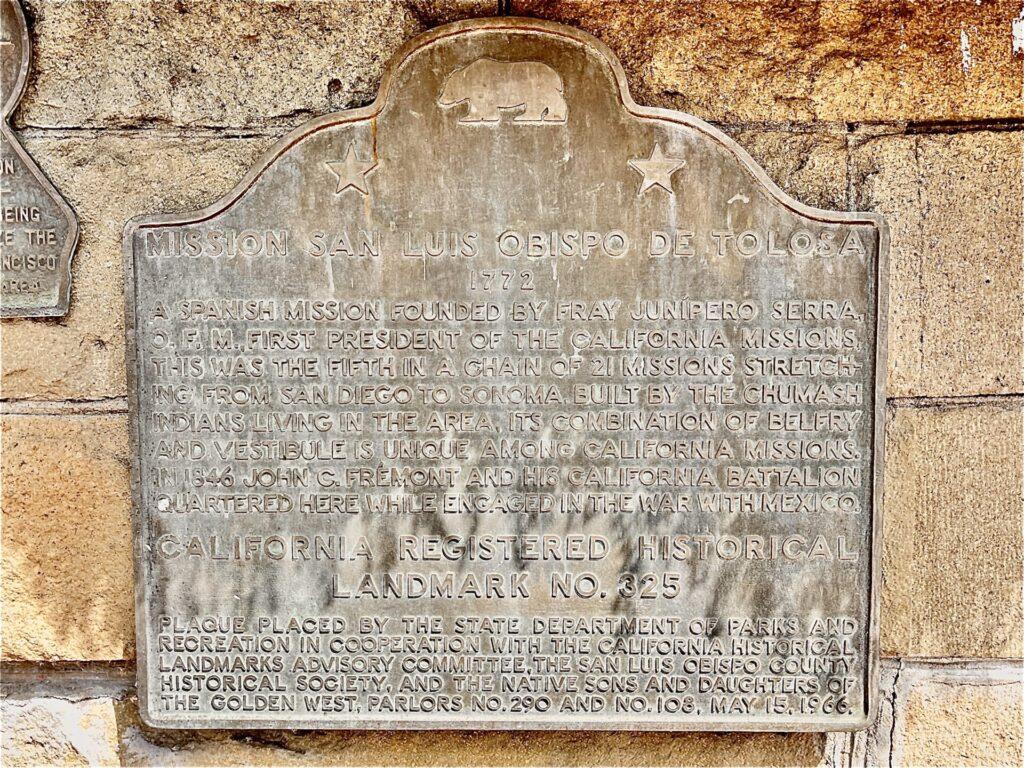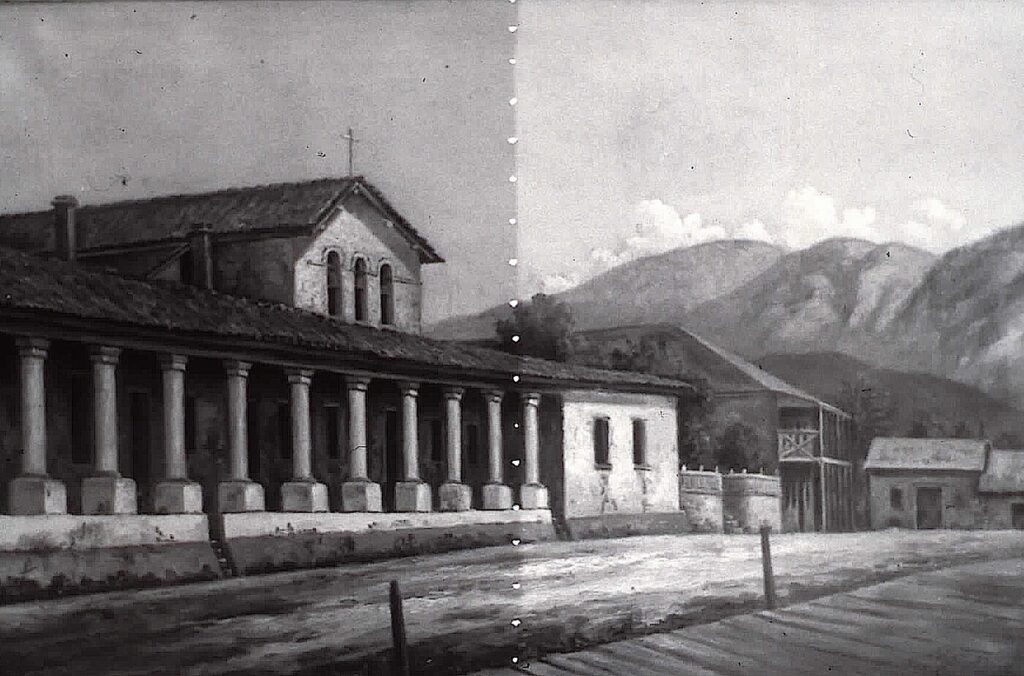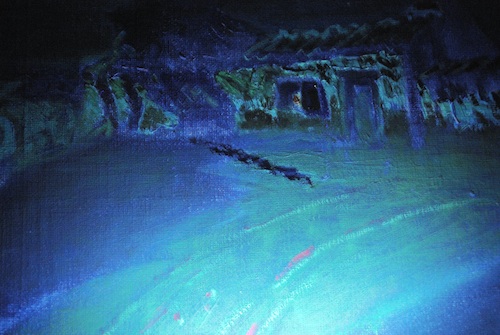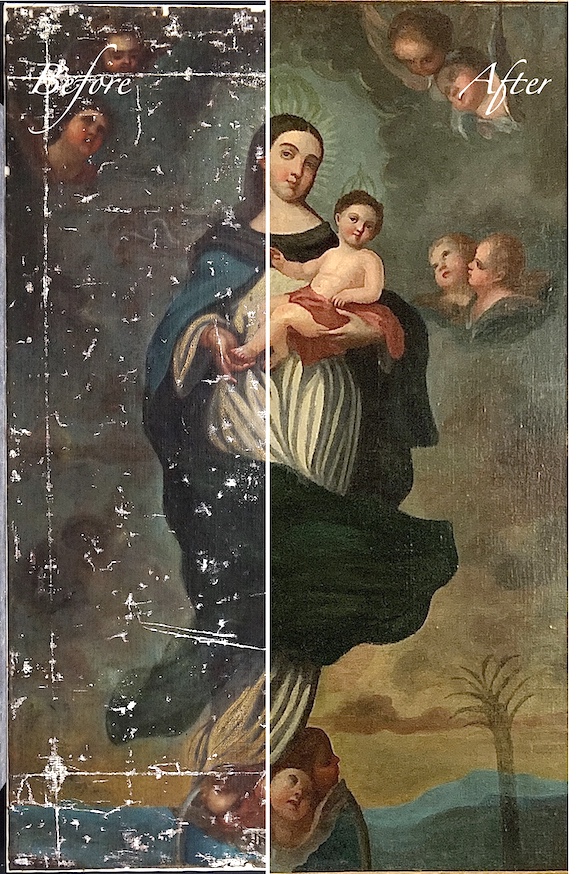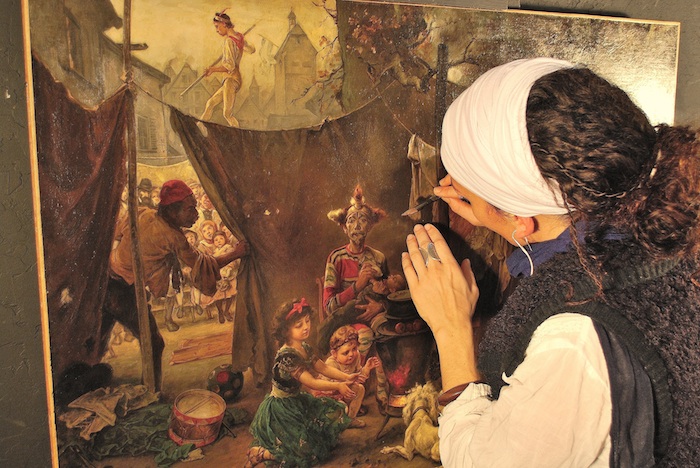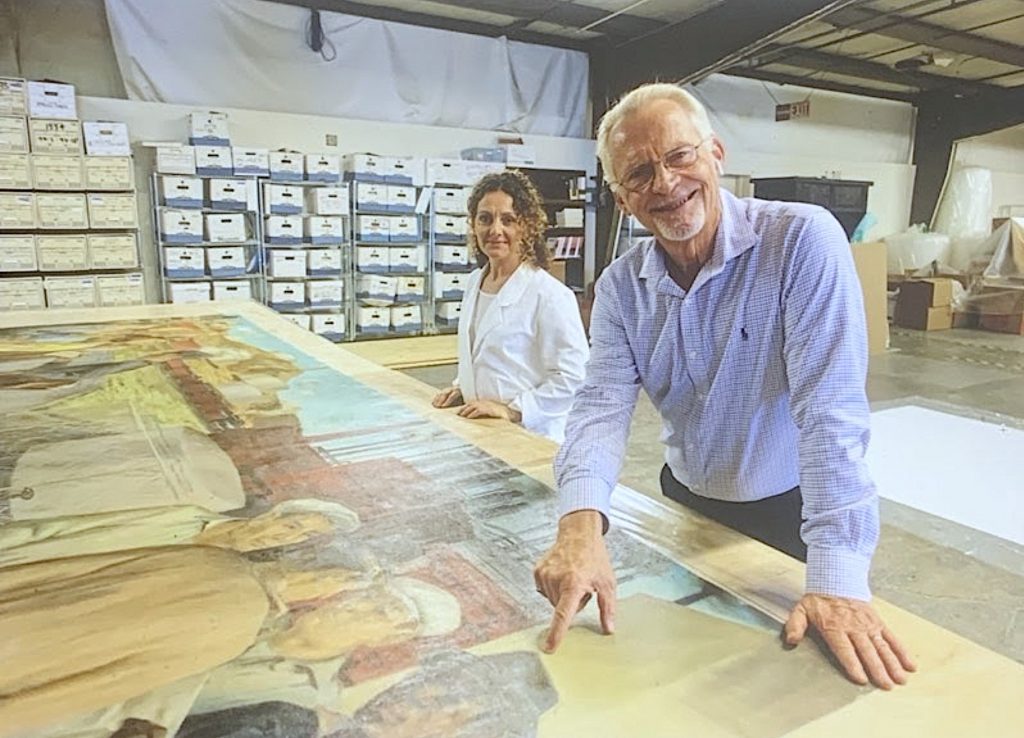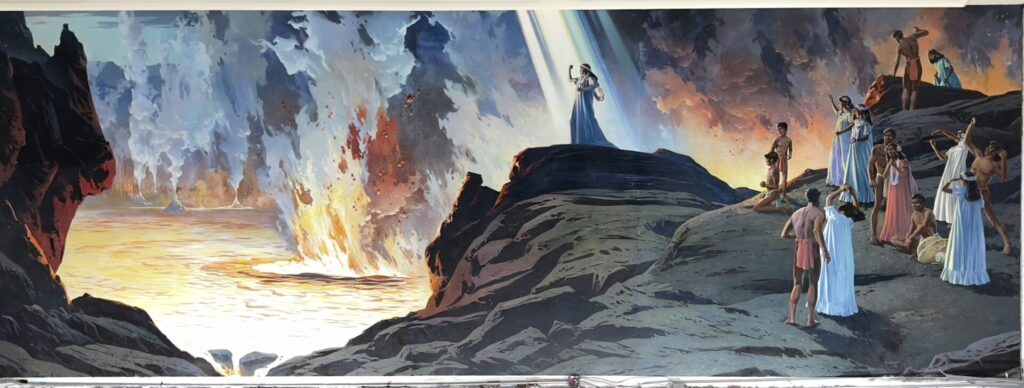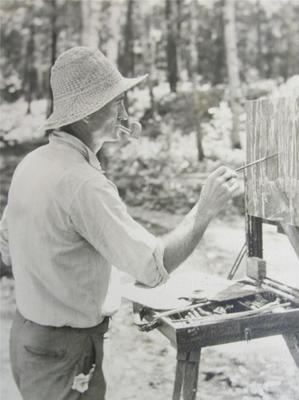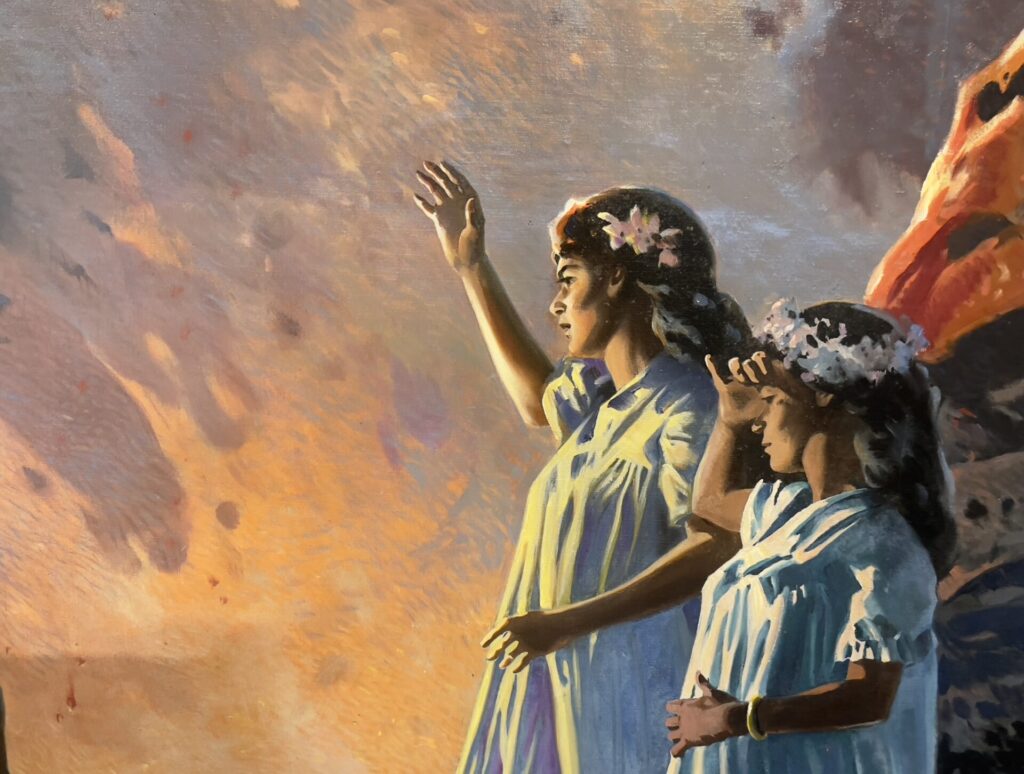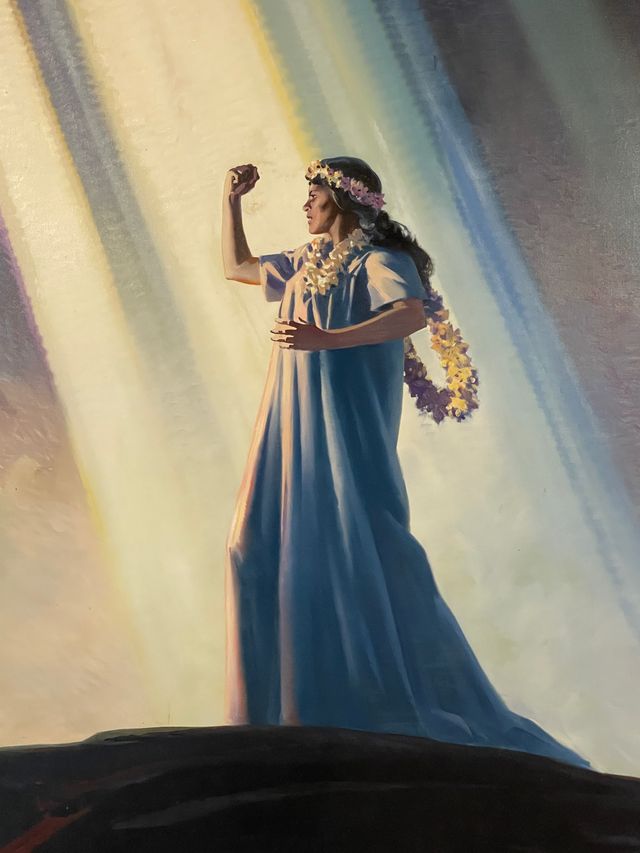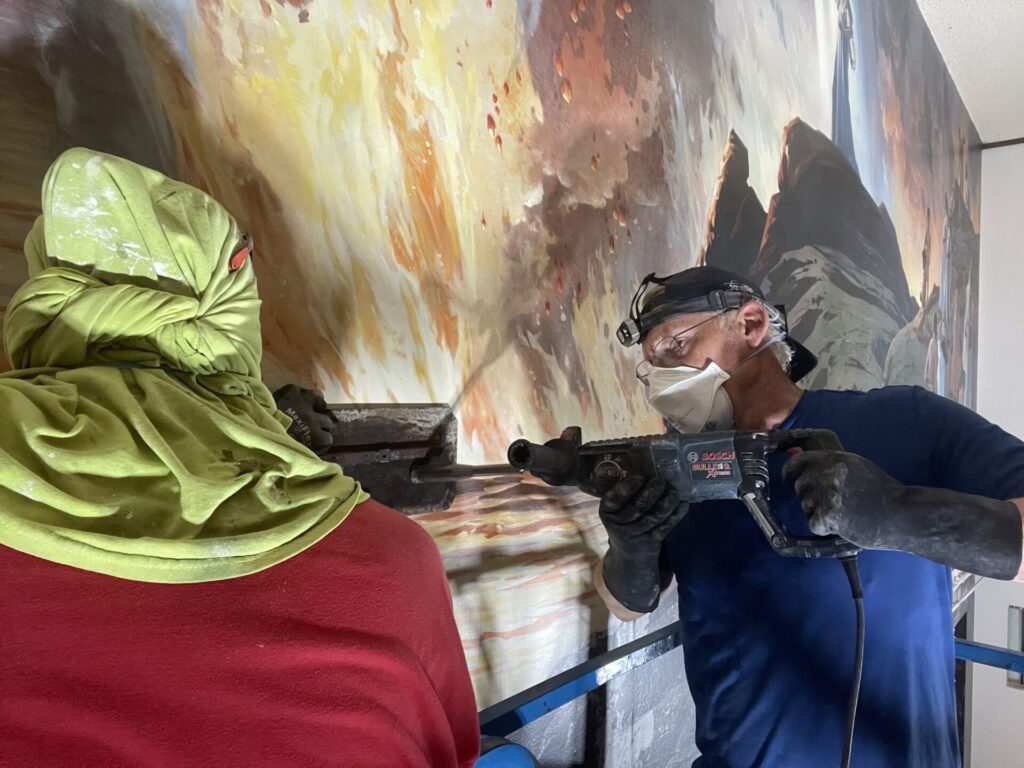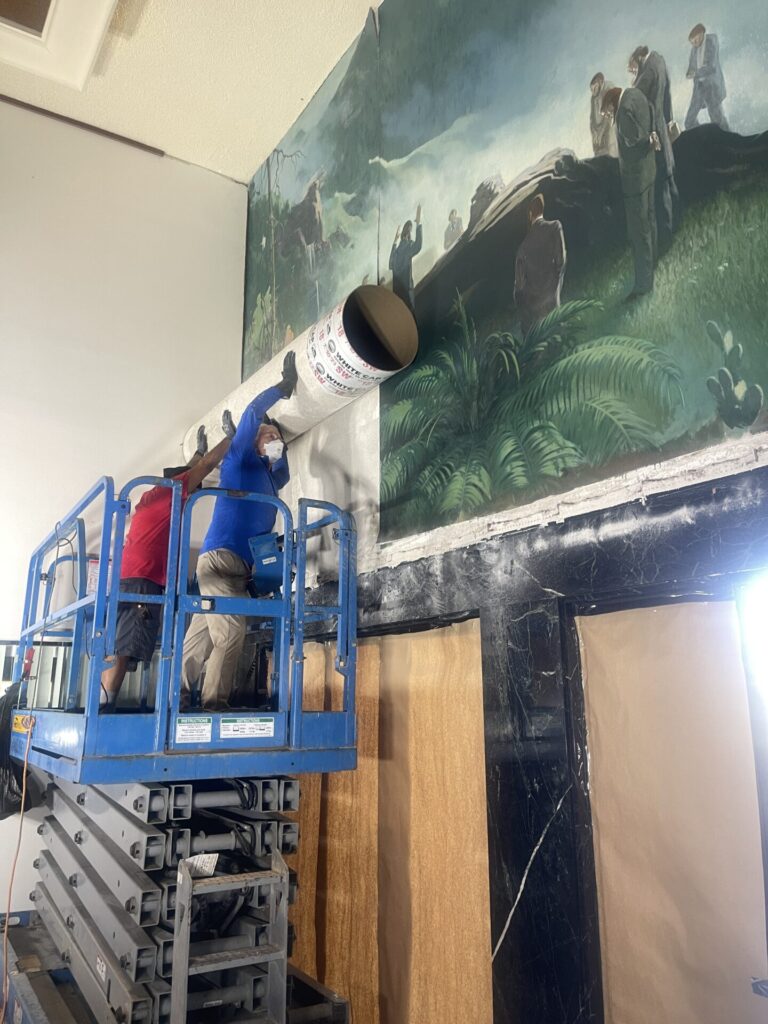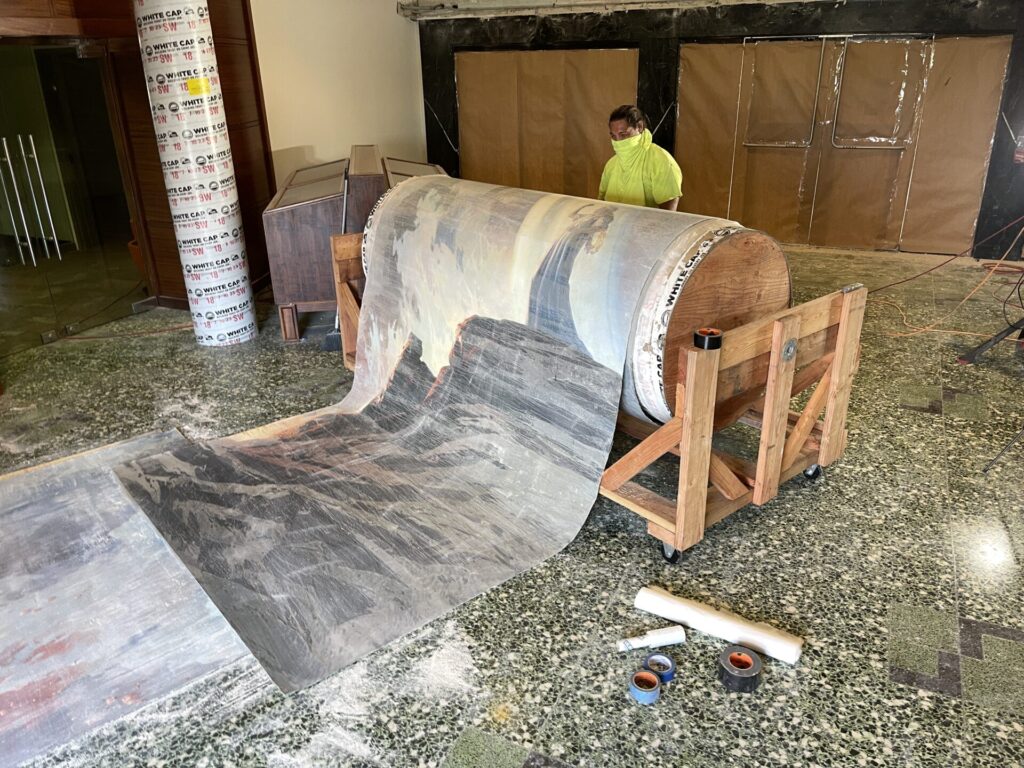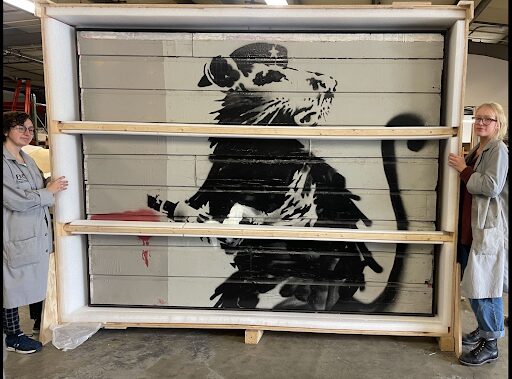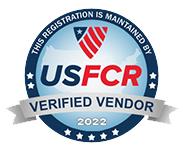Unveiling the Secrets of Mural Restoration – Explore the Thrilling Journey of Preserving Cultural Heritage!
Join us on an enlightening journey as we delve into the fascinating world of mural art restoration through the experienced eyes of professional art conservator, Scott M. Haskins. Whether you’re captivated by the history of Los Angeles’ Golden Age, intrigued by painting and mural art conservation, or grappling with water-damaged artwork, this article promises to be an enlightening read for you!
“The first painting I ever worked on was high up on scaffolding in an 800 year old monastery at the top of a mountain in northern Italy, in front of a mural dated 1365, learning the restoration of murals from a very experienced veteran UNESCO mural conservator from Vicenza, who had worked on murals in the Buddhist temples in the jungles of Burma, and in the tombs of Egypt.
Besides working shoulder to shoulder and benefiting from his inexhaustible experience, I loved hearing his stories about his travels and his emotions as he told about working among the tombs of the dead, and how he felt from that unseen world.”
- Anecdote from Scott M. Haskins: Fine Art Conservation Laboratories, Inc. (FACL) Head Art Conservator
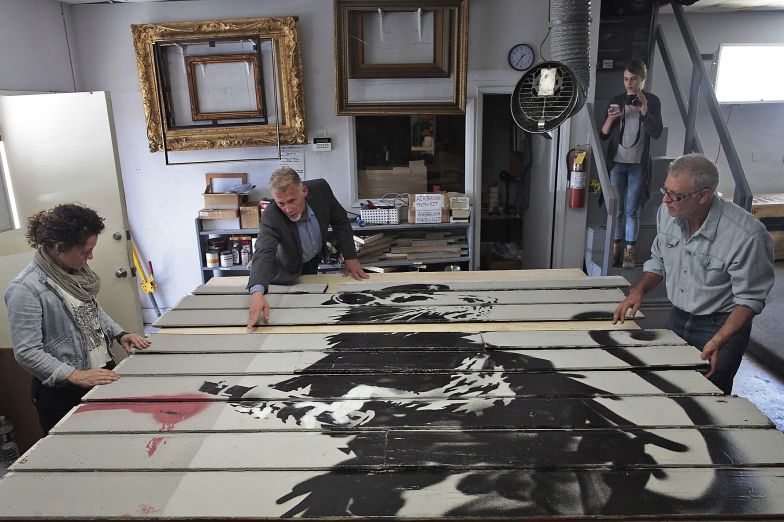
Banksy’s iconic rat at Fine Art Conservation Laboratories for reassembly, preservation, restoration and preparation for a massive tour.
Conserving Hugo Ballin’s Legacy
“These memories recently became very poignant as we worked on the art conservation of murals by Hugo Ballin, in the mausoleum of the Woodlawn Cemetery in Santa Monica, California. Not only was Hugo Ballin’s tomb 15 feet from where we worked but we were surrounded by thousands of the dead who were constantly looking over our shoulders on this two-week project to preserve and restore these 5 murals! I was vividly reminded of my mentor, Paolo Bacchin’s stories of working in the world of the dead.
Given the positive message of the faith-based murals we were restoring, I guessed that, if he was indeed present with us, Hugo Ballin was encouraging us, inspiring us, and collaborating for the successful completion and preservation of his artwork, and for the positive cultural heritage aspects of the public art.” – Scott
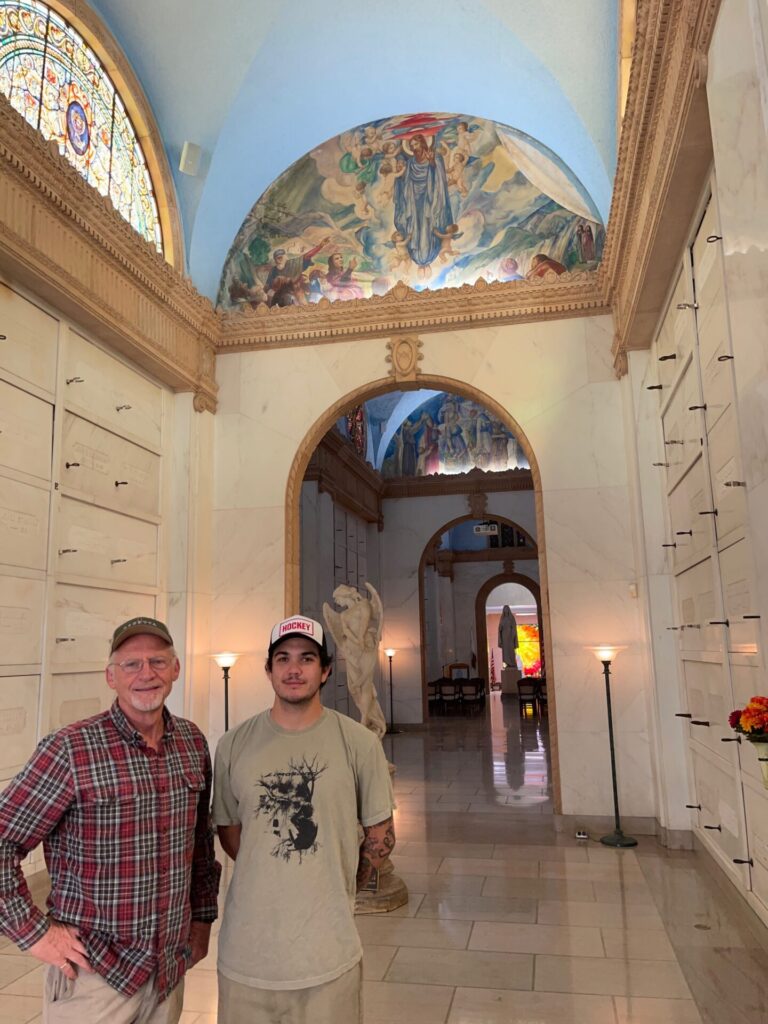
FACL’s mural conservation crew for the Hugo Ballin mural – Art Conservator Scott M. Haskins and art conservation technician, Denver Dillon
FACL is under contract with the city of Santa Monica as an expert in protecting and conserving public art. An additional competitive vetting process awarded FACL the work at the City cemetery. Over the decades, since the murals were painted, several issues including infiltrations of water and the resulting mold, break up of plaster, and other problems were patched up with the proverbial “Band-Aid on an open artery” type of repair. Proper stabilization and preservation were desperately needed to preserve beautiful public works of art for future generations.
Restoring Art Damaged by Water and Mold
The Impact of Water Damage
Water damage can severely impact paintings, murals, and other valuable items. This type of damage not only affects the visual appeal but also the structural integrity of the artwork. Issues can range from discoloration and mold growth to more severe damage like warping or flaking paint.
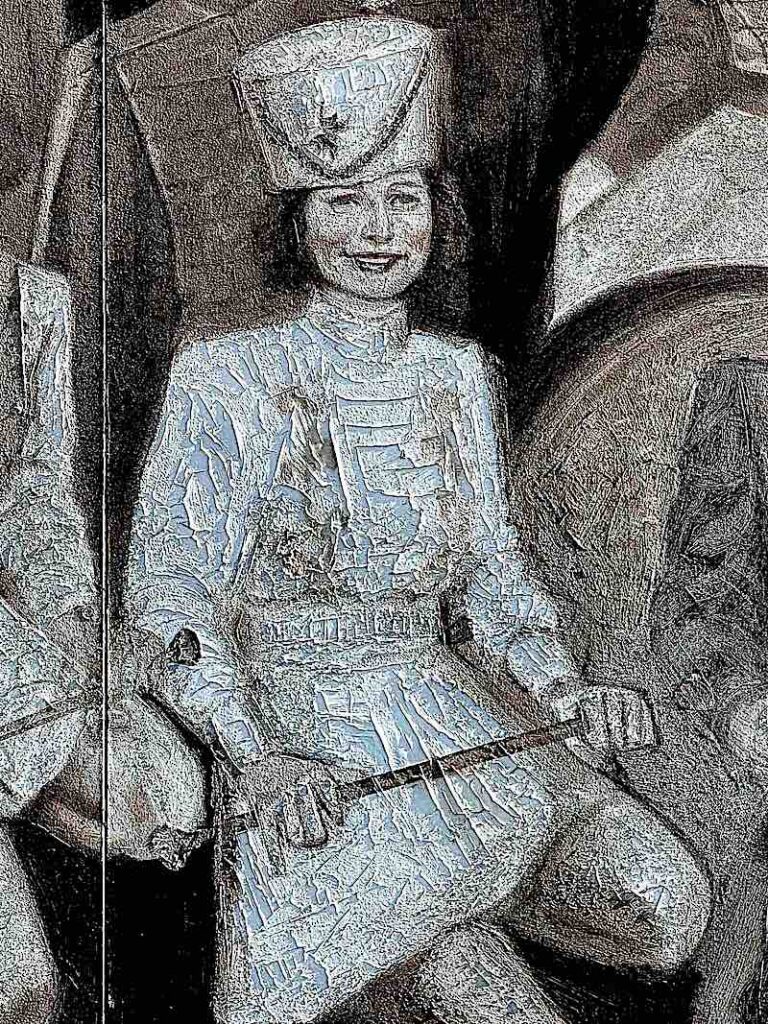
Example of flaking paint on a mural caused by water damage.
The vintage murals, originally painted in Hugo Ballin’s famous recognizable art deco style, were thinly painted in oil on lightweight canvas, and then glued to the walls of the mausoleum with a wall paper paste. The extent of the water damage was heartbreaking. These materials did not hold up well with water seepage and the rough handling of inexperienced maintenance and restoration personnel over the years.
Mold had infiltrated the paint layers, and the colors were dull and faded. But we knew with the right care, these murals could be brought back to life.
The Restoration Process
Restoring art damaged by water and mold involves several meticulous steps. First, we stabilize the artwork to prevent further deterioration. This may involve drying out the affected areas, removing mold, and treating the surface to halt the spread of damage.
Each mural needed to be carefully removed from the wall to be cleaned. FACL conservators needed to clean off the mold, remove loose dried glues, re-do busted-up plaster, and properly remount the original paintings on canvas back into their original positions on their original walls. Surface cleaning and revarnishing were done after this removal. All of this work was done with professional art conservation standards of practice and ethics.
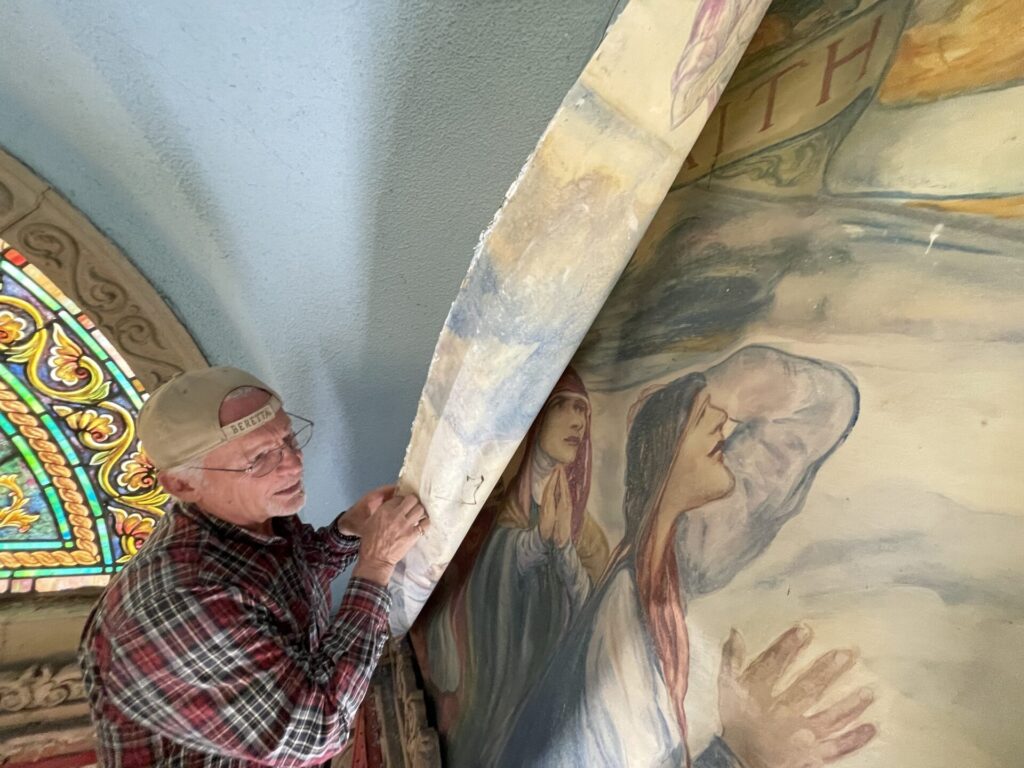
Scott M. Haskins in the removal stage of the mural restoration process
Finally, we work on restoring the artwork to its original condition. This can involve repainting areas where the paint has flaked off, fixing any warping or structural damage, and applying protective coatings to prevent future damage.
“One of my favorite parts of the restoration process is seeing the colors come back to life. It’s like watching the artwork breathe again after being suffocated for so long.” – Scott
Related Services for Water-Damaged Art
At FACL, we offer a comprehensive range of services to address water and mold-damaged artworks. This includes decontamination, stabilization, and preventive measures to protect against future damage. Whether it’s a beloved family heirloom or a valuable masterpiece, we’re committed to preserving the integrity and beauty of your art.
Hugo Ballin: An Artist of Many Talents
Hugo Ballin was an extraordinary artist known for his remarkable contributions to both the art world and the film industry. Born in 1879, Ballin was an American artist, muralist, author, and film director. His creative journey took him from painting exquisite murals to directing memorable films. This unique blend of artistic talent and cinematic vision made him a standout figure of his time.
“When I first learned about Ballin’s dual career, I was fascinated. It’s rare to see such a seamless blend of cinematic and artistic talent. His films had a painterly quality, while his murals told stories with the depth of a film director’s eye.” – Scott
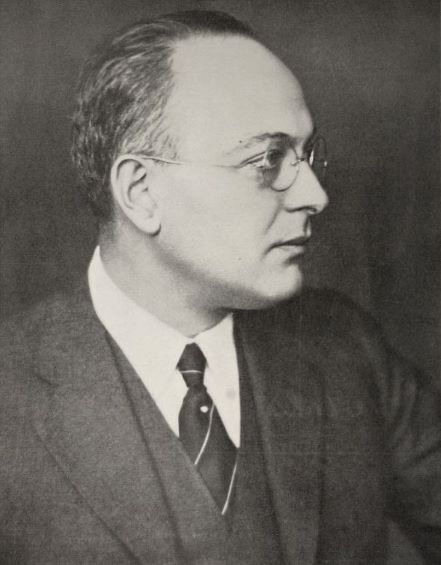
Hugo Ballin – Art Deco Mural Artist & Film Director
From the Silver Screen to the Painting of Public Art Murals
Hugo Ballin was, perhaps, the highest quality and most well-known mural artist in Southern CA, particularly in the Los Angeles County area, in the 1st half of the 1900s. In addition to his work in Southern California, he was well-known nationwide and was even part of the art competition at the 1932 Summer Olympics.
Before dedicating his life to mural painting, Hugo Ballin made a name for himself in Hollywood. In 1917, he began working for Goldwyn Pictures in New Jersey as an art director and production designer. By 1921, he moved to Los Angeles at the request of Samuel Goldwyn. Ballin directed several silent films, bringing his artistic vision to life on the silver screen. This experience in the film industry influenced his approach to art, allowing him to create murals that are not only visually stunning but also narratively rich. Ballin’s training in classical painting is evident in his murals, completed across the United States, which eventually made him one of the foremost muralists in the Los Angeles area. Notable works include murals at the W. M. Keck Foundation Central Rotunda at Griffith Observatory and a set of frescoes depicting the life and death of Christ, located at Woodlawn Memorial Cemetery in Santa Monica, where Ballin is also buried. Each piece tells a story, capturing the essence of the subjects with meticulous detail and vibrant colors. FACL, Inc. consulted on the project at Griffith Observatory.
“I remember visiting the Griffith Observatory as a kid, being awestruck by the grandeur of those murals. Little did I know, years later, I would be part of the team helping to preserve Ballin’s incredible legacy.” – Scott
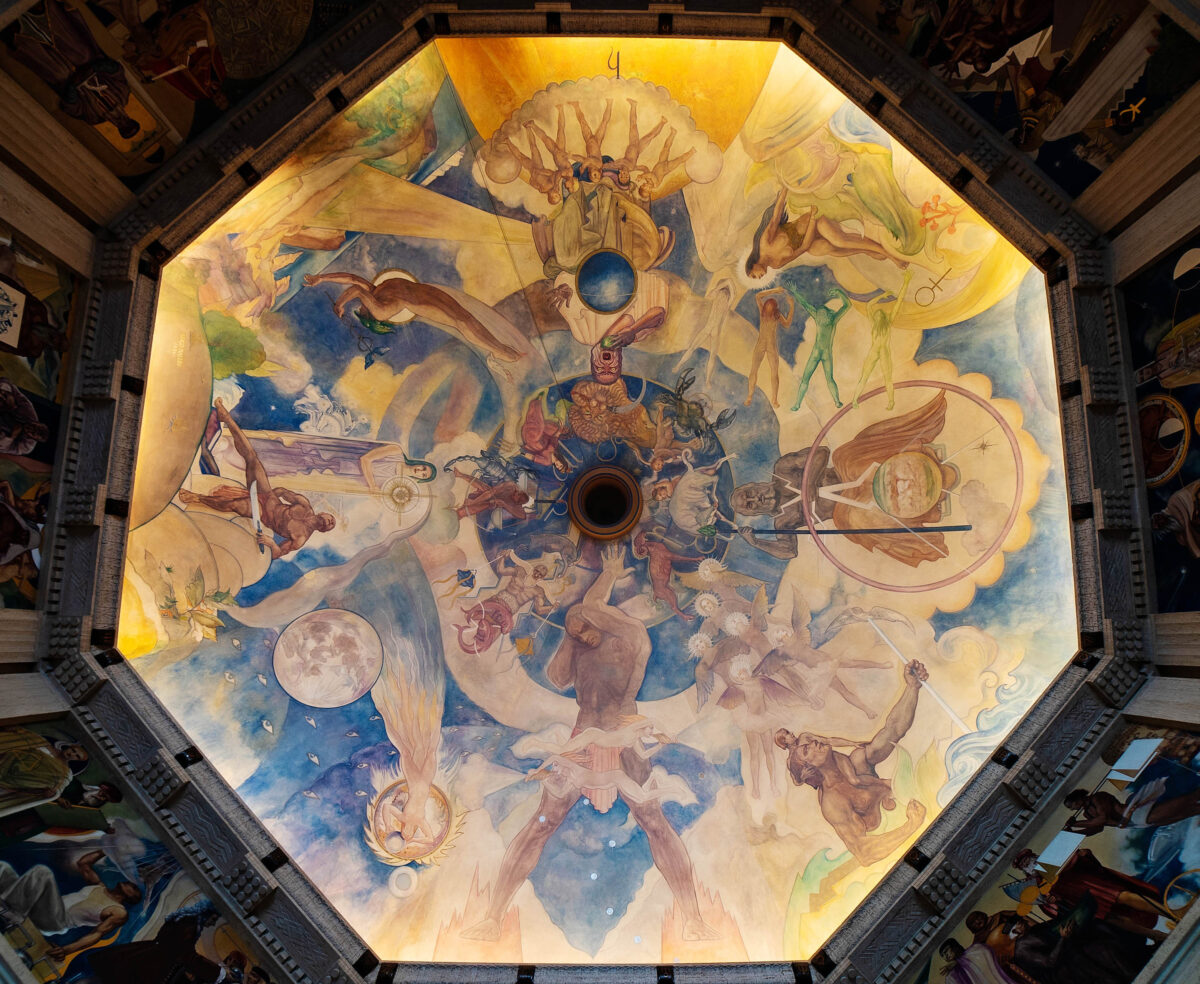
Hugo Ballin Murals at the Griffith Observatory – Mount Hollywood in Griffith Park
Conclusion
Hugo Ballin’s legacy as a mural artist and movie director is enduring. His work continues to inspire and captivate audiences. At Fine Art Conservation Laboratories, Inc., we are honored to play a role in preserving his murals. Our expertise in dealing with water-damaged painting restoration ensures that these masterpieces remain as vivid and impactful as the day they were created.
For more information on our services and how we can help with your art restoration needs or questions about art conservation, contact us today at 805-564-3438.
Protecting the beauty and integrity of your artwork is not just our job—it’s our passion.
Serving the Western United States

Fine Art Conservation Laboratories, Inc. proudly serves areas from Santa Barbara County, CA to Orange County, CA, as well as Las Vegas and Salt Lake City, UT. Our work in art and restoration helps maintain the cultural and historical treasures found in these regions. We offer door-to-door services, ensuring that your paintings and murals receive the care they need without you having to worry about transportation.
“I’ve had the pleasure of working with clients across these areas, each with their unique stories and treasures. Whether it’s a mural in a historic building or a painting passed down through generations, the joy of seeing these pieces restored is immensely rewarding.” – Scott
Art Insurance Claim Guidance
Fine Art Conservation Laboratories’ 45 years of expertise in preserving and restoring art offers invaluable help and practical knowledge for helping people through the insurance claim process for damaged collectibles and art pieces. Our experienced team understands the complexities of insurance claims related to art, heirlooms, and antiques, providing reports that are properly prepared with information that the insurance company never puts in doubt. Fine Art Conservation Laboratories charges flat fees for this work, not a percentage of the claim settlement, and our expertise is honored nationwide. Let us help make the art, heirloom, and collectible part of the insurance claim process as seamless as possible and preserve your peace of mind.
This blog post has been syndicated at ExpertClick.com.
What does it mean that this article is “ syndicated”?
It’s a bit of a coup to get an article syndicated, and its certainly prestigious, as additional “proof” that the info and the author are considered far and wide authoritative and an expert in the field. So, enjoy and trust our content!! This article was syndicated for USA national redistribution.
When something is published, usually by a news source, and is made available through different venues for redistribution then it is said to be syndicated. Publications that are syndicated are usually considered of value as being from an expert, educational, new worthy or valuable for wide popular interest. See syndication page at the renowned publicity site: https://www.expertclick.com/NRWire/
This website’s syndication included:
1) Included in the ExpertClick Press Room as a ‘press release.’ (different than a ‘news release’)
2) Included in the ‘Speaker Bureau Platform Page.’
3) Shown on the front page of ExpertClick, in rotation with other most recent posts.
4) Shown in the ‘News Release Results page.’
5) Included on optimized for searches on all my topics of expertise.
6) Shown via RSS linked from the Press Room. (A specific way news is actively distributed within the industry)
7) Shown in the full RSS feed from ExpertClick. (Another, different specific way news is actively distributed within the industry)
8) Syndicated to LexisNexis.com As of 2006, the company had the world’s largest electronic database for legal and public-records related information, distributor of academic content and expert opinion.
This article has been syndicated at https://www.expertclick.com/NRWire/
